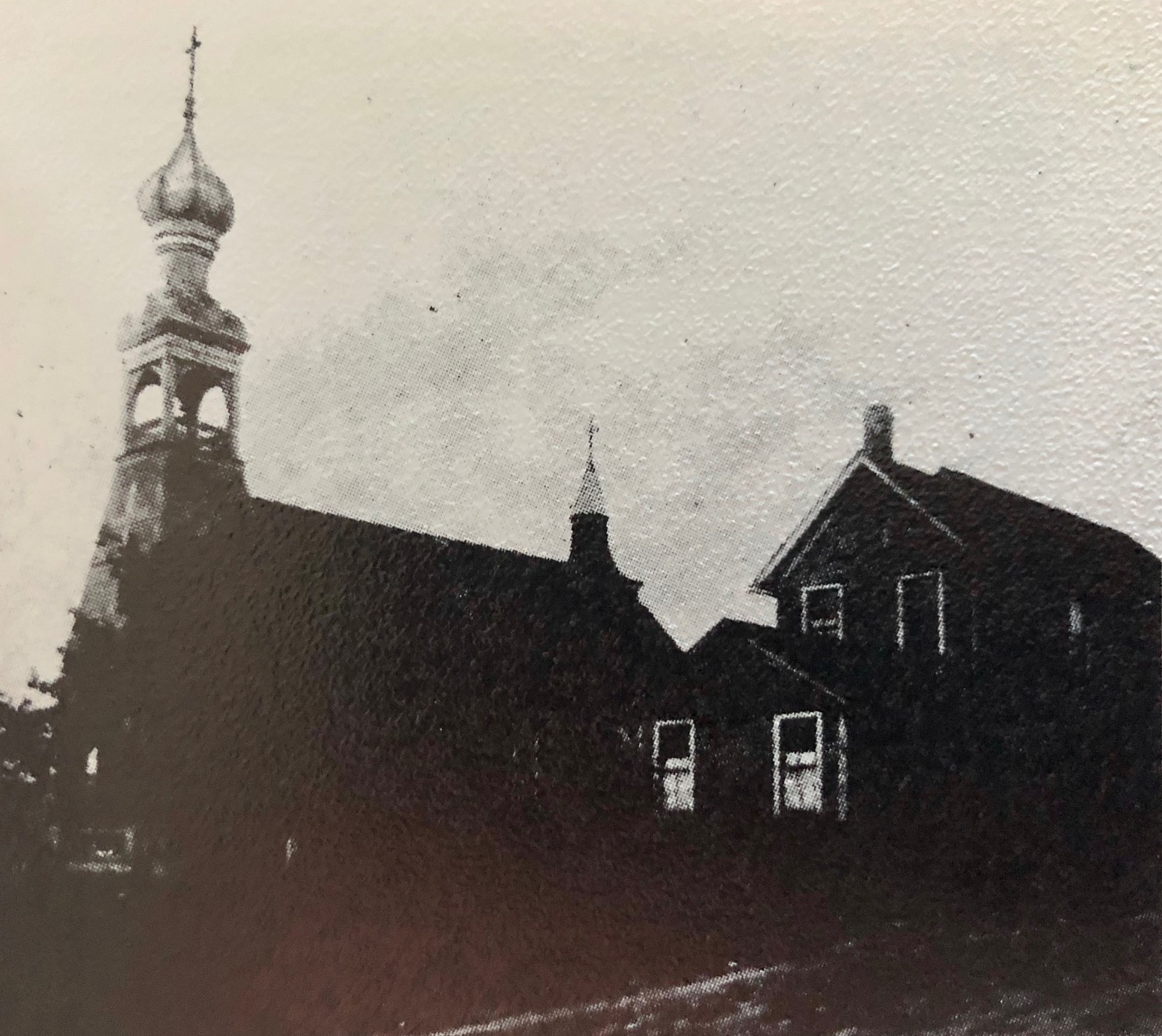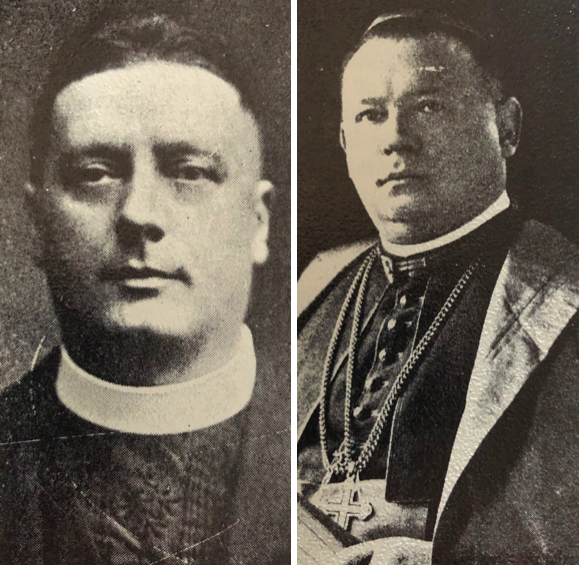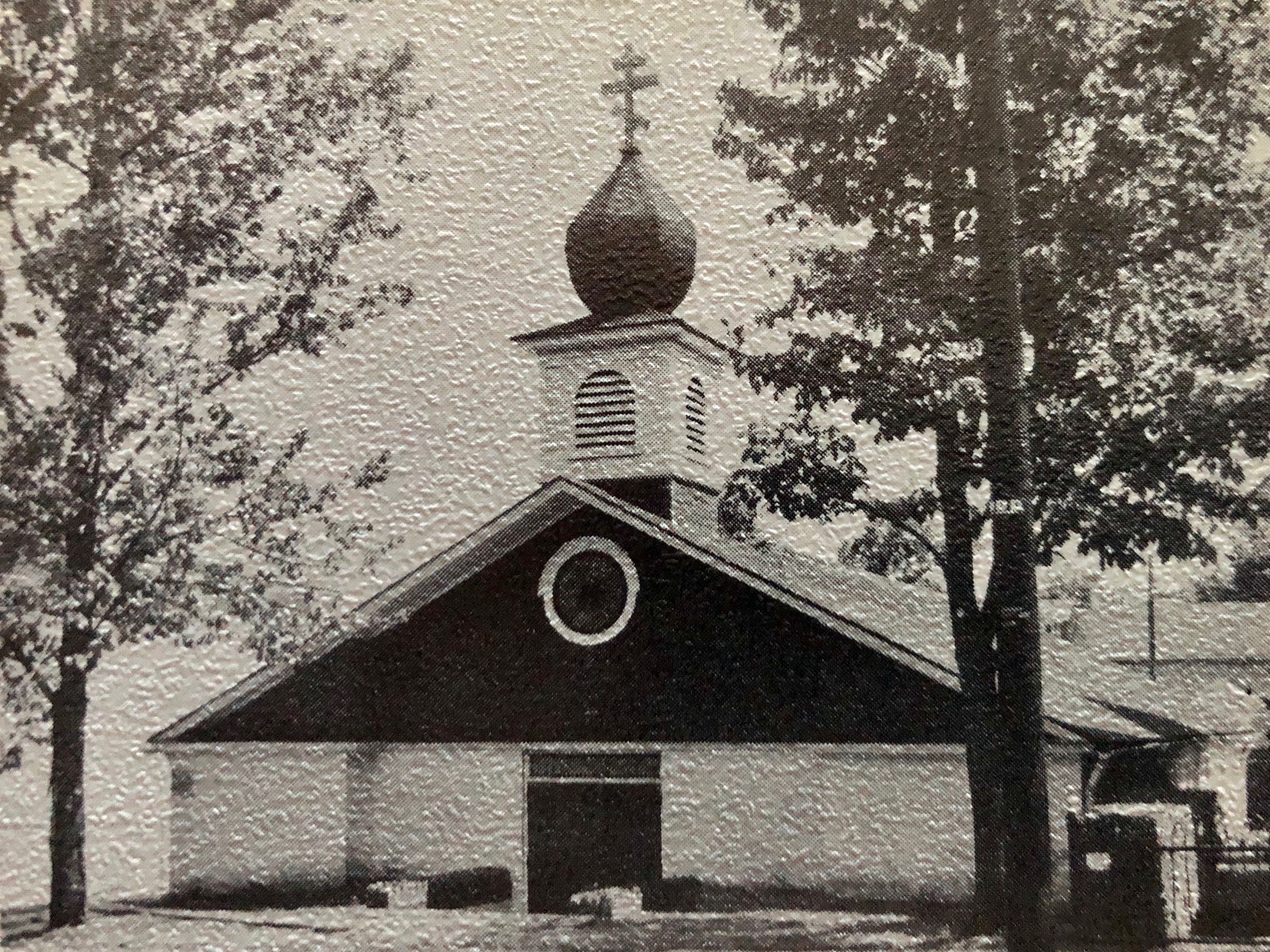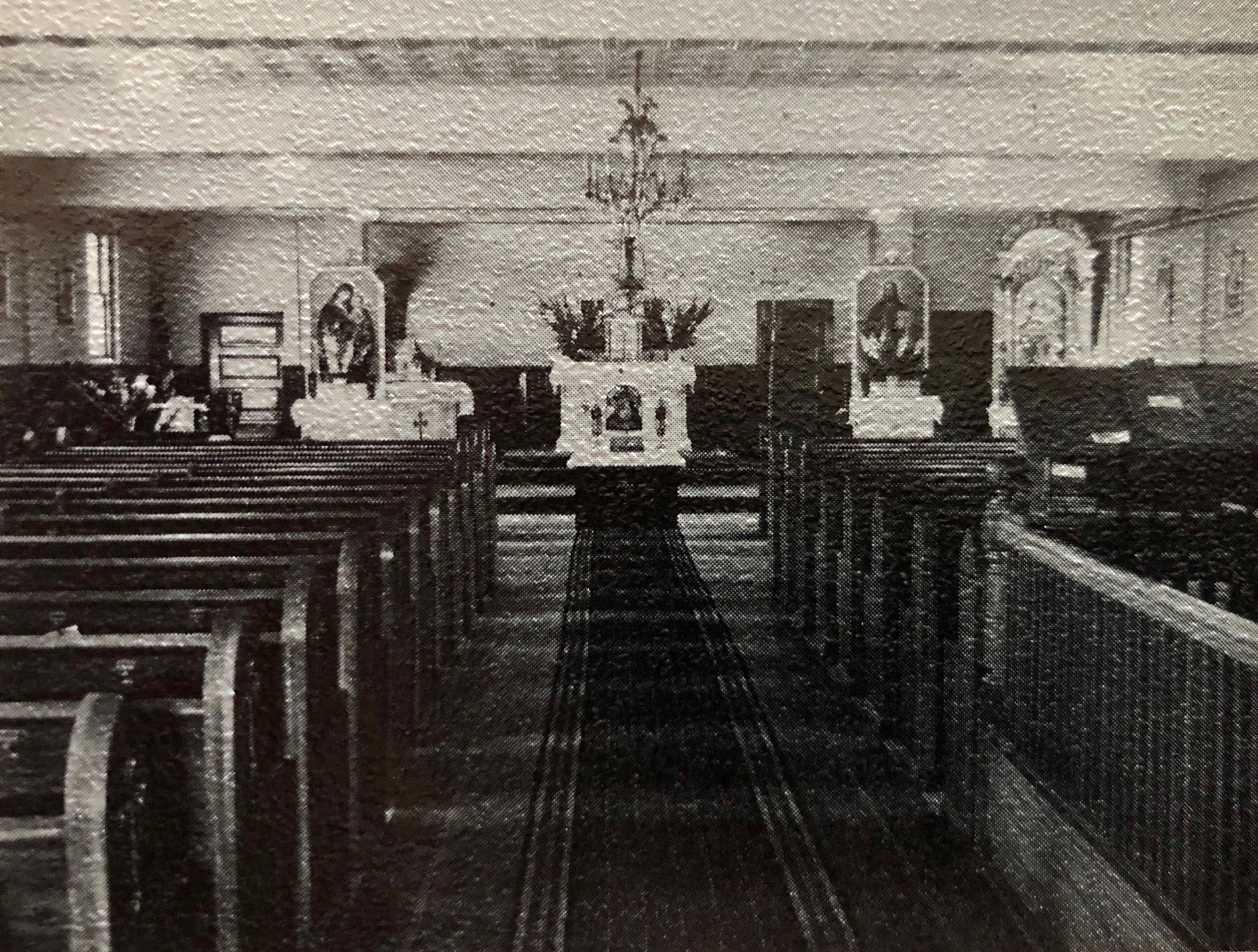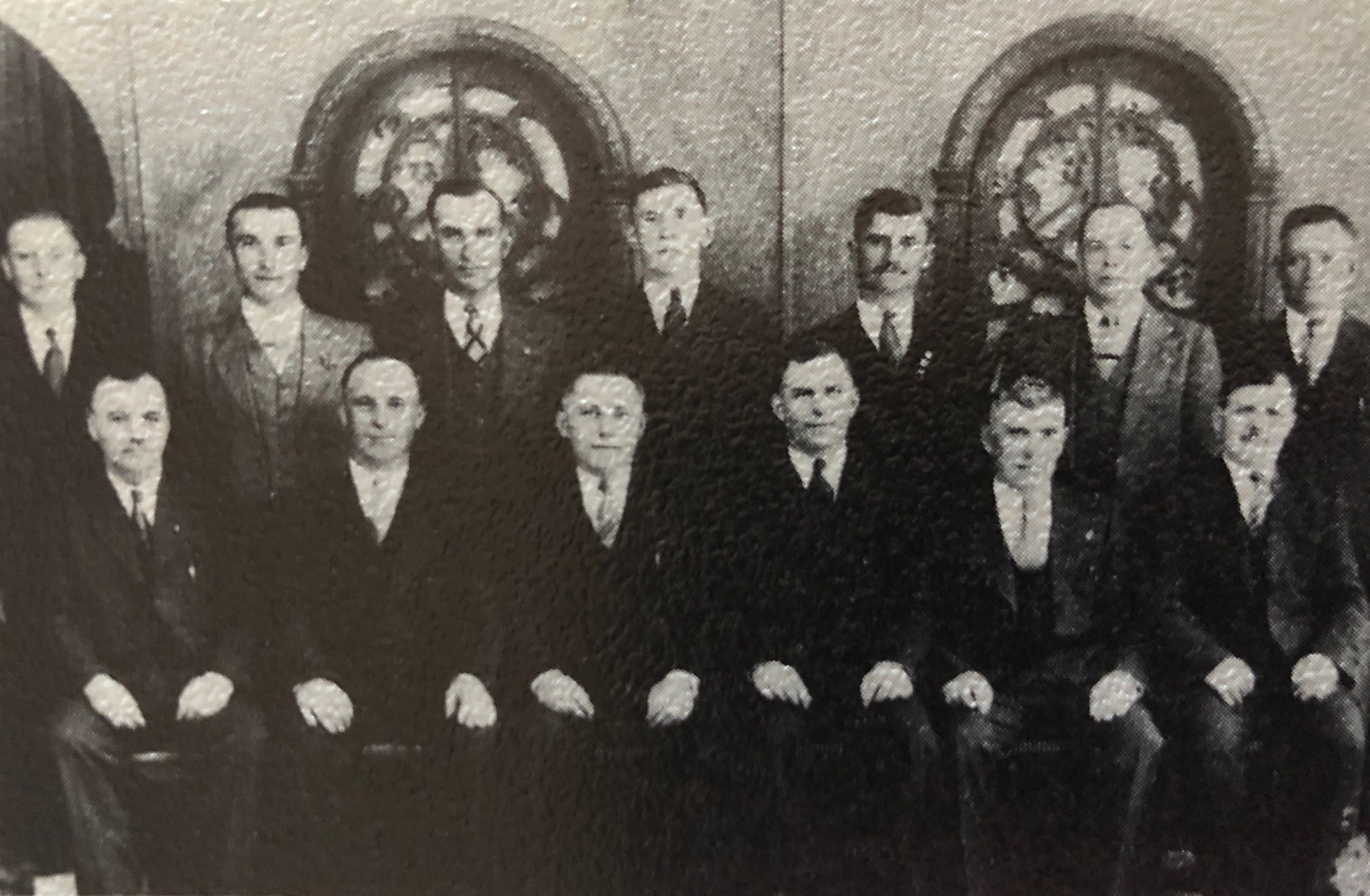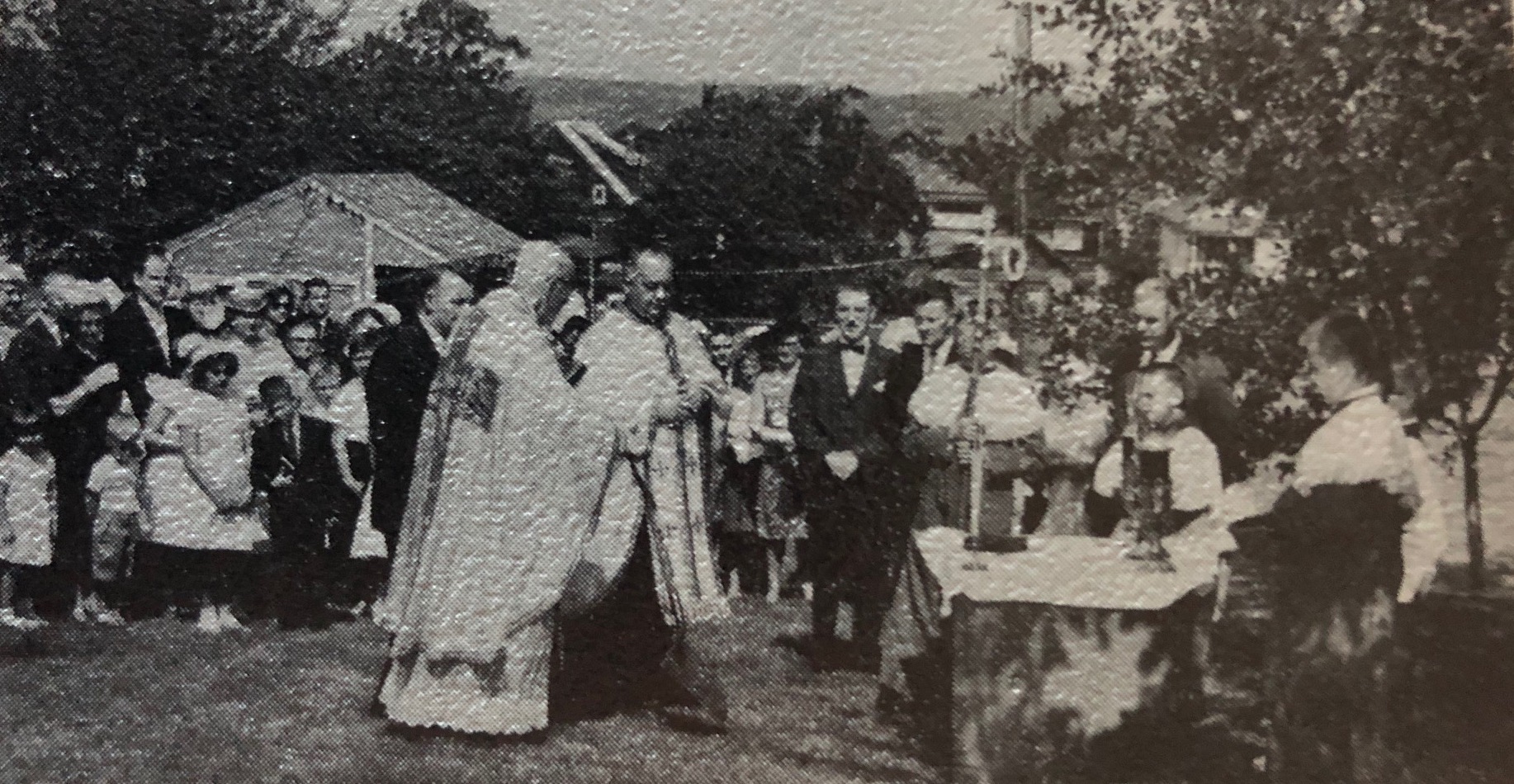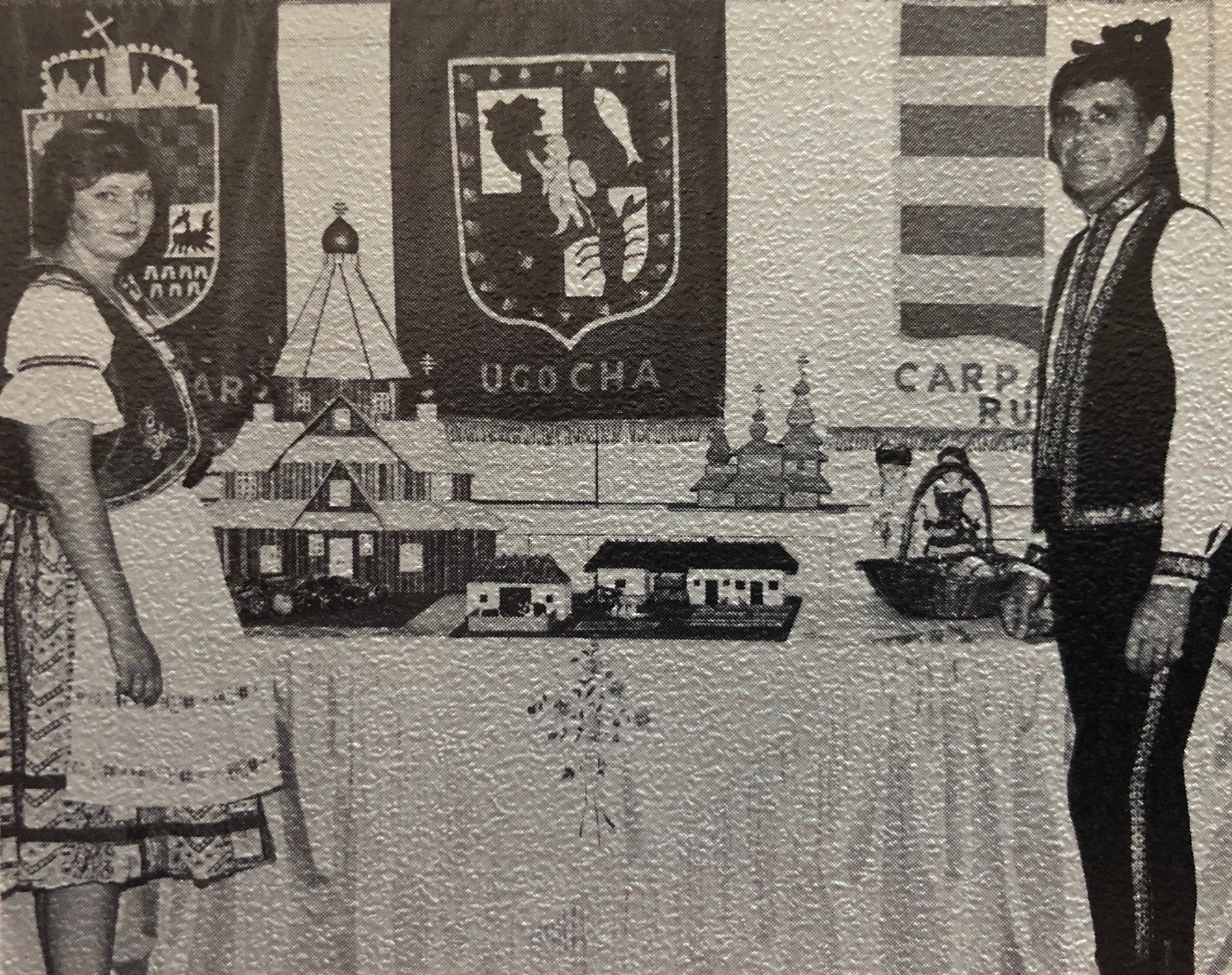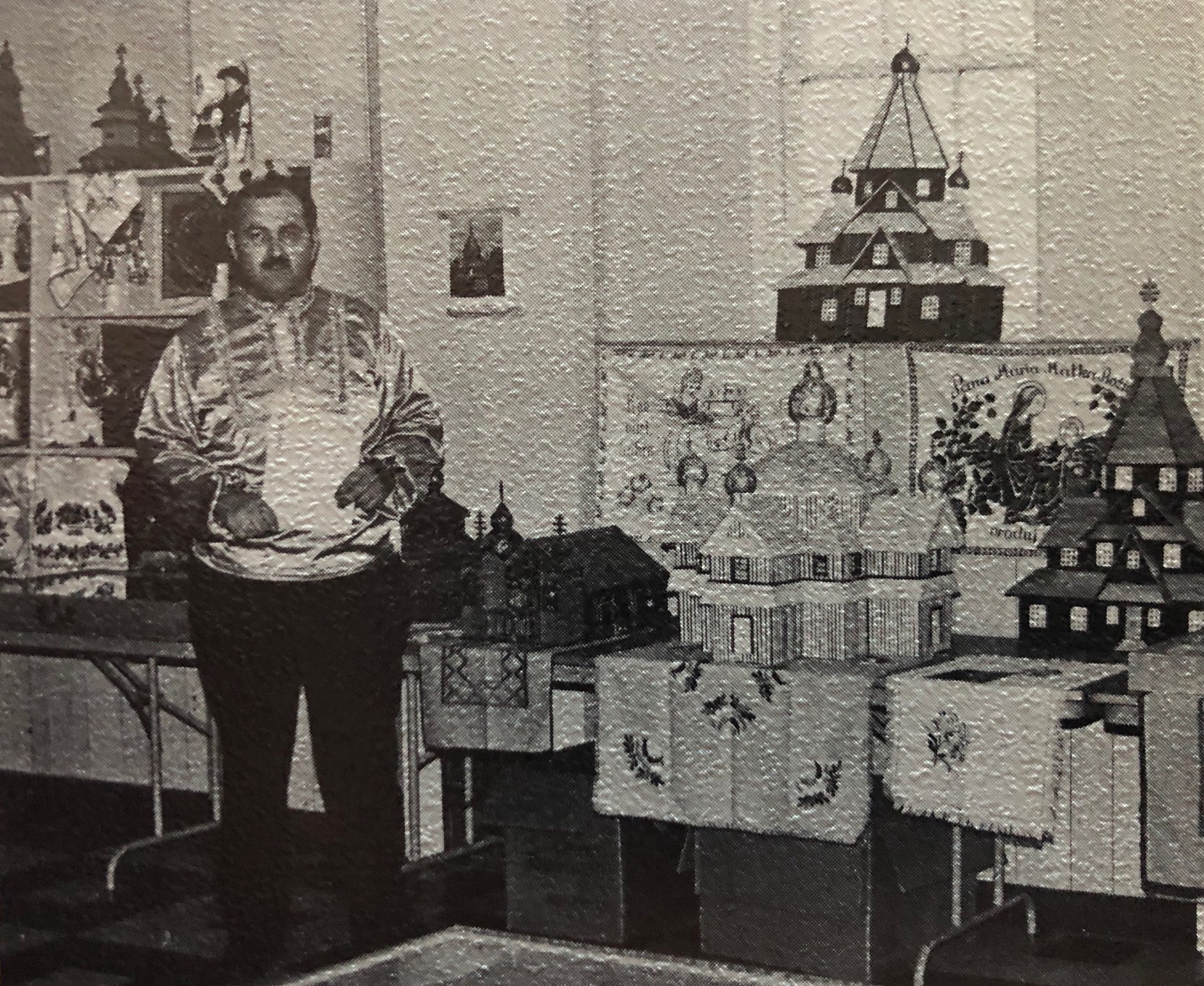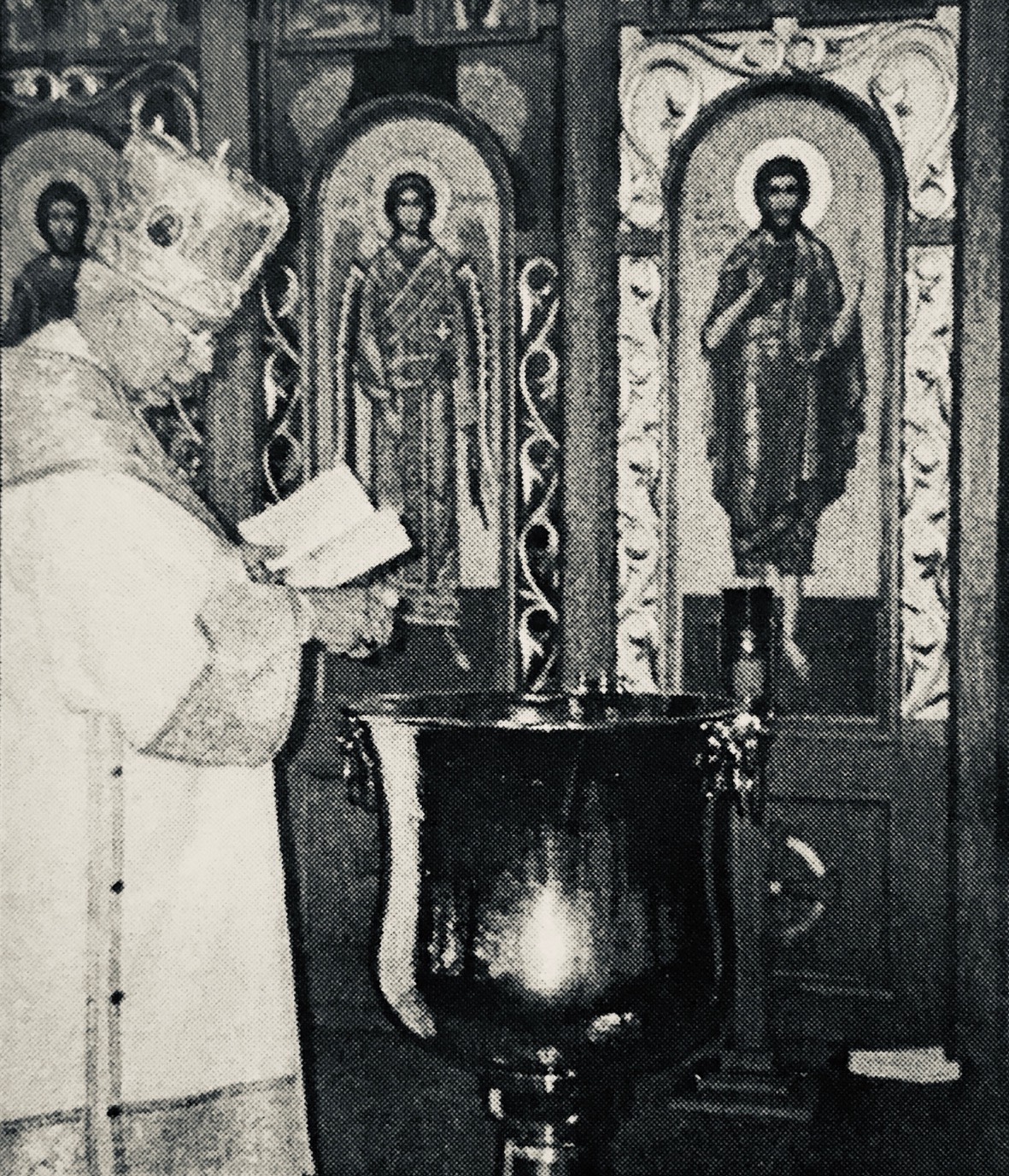Parish History
The history of Saint John’s Byzantine Catholic Church traces its beginning to the year 1929, when a group of dedicated Eastern Europeans gathered to make plans to erect a church in which they could worship according to their Eastern Catholic traditions.
The late 1800's saw the beginning of a massive movement of Eastern Europeans to America. Among those coming were many Greek Catholics from the Carpathian Mountain region of the Austrian-Hungarian Empire.
Hungary had 63 counties. One of the smallest is the county of Ugosca. The name of "Ugoscanian" applied to our parish since most of the parishioners of St. John’s who established the parish, and a majority of the present—day members and their descendants—are from Ugocsa (especially from the villages of: Onok, Velikoje Komnaty and Cengava). Today this area is located in the Zakarpatska Oblast, western Ukraine.
Among the early immigrants in the late 1800’s many came to the coal mines of Pennsylvania. Of course, they were not planning to settle, only to save enough money to return to Europe to buy a little land of their own to cultivate and live. Therefore, neither political nor religious care was provided for them from the old country. As the circumstances changed by the wars and political and national division, as well as more numerous immigration in the beginning of the 1900’s, these devoted, hard-working, peaceful people of the Greek Rite Catholic faith were like shipwrecked souls. The country from which they had come had changed and many couldn’t return. The new home in America was strange because of the language and the earlier settlers’ domination which created for them an orphan’s environment. Among the growing thousands of immigrants: Hungarians, Rusins, Slovaks, Poles, Lithuanians, etc., there began a strong determiniation to organize their respective benevolet societies from which most of the ethnic pariishes were established. Among the Rusin and Hungarian immigrants in Wilkes-Barre and vicinity since 1886, most being relatives and fellow countrymen, they helped one another to find jobs and to overcome the first orientation and hardship of a new country.
By 1889-1890 the number of Greek Rite Catholics in Wilkes-Barre, Pennsylvania had so grown that they were in a position to form a sizable congregation. As more of the Greek Rite, Rusin and Magyar immigrants arrived, they felt the need to celebrate their religious services in the traditional practice of the Greek Rite. Now it was to Bishop John Pasztelyi of the Eparchy of Munkacs, that they appealed for priests to administer their spiritual needs. As a result, Father Alexander Dzubay came to Wilkes-Barre, Pennsylvania. All the Greek Rite Catholics in the town and the vicinity belong to St. Mary of the Assumption Parish, North Main Street (Brookside). As the environment changed and the number of immigrants increased, the distance and transportation became more difficult, sooner or later larger groups in the nearby communities decided to establish their own parishes, such as our own Parish of St. John the Baptist in (Georgetown) Wilkes-Barre Township, Pennsylvania.
The early records (census) from the possession of Michael Kish Sr. Family lists the members of the Spook-Greek Rite Catholic Rusin Society as 74 members: 2 from Zemplen, 4 from Saros, 5 from Komarom, 20 from Bereg, 40 from Ugocsa counties, and 3 from Galicia-Ukraine.
In the census and records of activities books from the possession of the Wasily Antellocy Family, pages 1 through 28, the members of the Spolok lists: 2 from Szepes, 4 from Saros, 5 from Zemplen, 6 from Ung, 4 from Bereg and 49 from Ugocsa counties. The comparison proves that immigrants from the "old country" sought to live in the same areas with relatives and friends, seeking each others company, trust and aid.
Most of the Ugocsanians settled in Wilkes-Barre Township, Pennsylvania. Although faithful to St. Mary’s, the Mother Church, they had the greatest desire to establish their own Parish. Several attempts were made between 1920-1924 but accepting the final opinion of their Spiritual Father, Rev. Nicholas Chopey, they postponed the purchase of land and the erection of a Parish till June 10, 1928, when a meeting was held at which John Danko, George Bokor and Michael Kish, Sr. were designated to begin organizing St. John the Baptist Parish. At the meeting on October 7, 1928, it was agreed that the Annual Dues beginning January 1, 1929 would be: $25.00 per family and $15.00 per single member.
On October 10, 1928, the property of 756 East Northampton Street, Wilkes-Barre Township, Pennsylvania was purchased from Mr. John Danohoe for $8,033.31. There were two homes on the lot. One of the homes was sold and the other served as a rectory and today is the residence of the parish cantor. Reading the record from the possession of the John Danko Family, the special offerings toward purchasing the property, it is edifying how those founders found various ways to raise the funds for the necessary needs and mortgage. Six thousand dollars was borrowed from the Liberty State Bank to pay for the property, and within one year this loan was repaid. George Schroder, an architect, was engaged to draw plans for a one story church building.
On October 8, 1929, the Board of Trustees and Members of St. John the Baptist Greek Catholic Congregation, called a meeting and voted to award the contract to build the church to Martin Bohinsky in the amount of $12,624.00. The trustees were: Wasil Antaloczi (Antellocy), John Zaritski, Michael Sviscsa (Sisko). Officers were: President, John Danko; Secretary, George Bokor; Treasurer, Michael Kish, Sr.
This plan was only tentative as Mr. Schroder was also working on the plans for the upper structure which was to be built as soon as the basement was completed. Final plans were being arranged for the construction when suddenly it happened, the day was October 29, 1929, the stock market crashed. The Liberty State Bank closed and all banks stopped loaning money for mortgages. Since it was impossible to borrow from banks, Bishop Basil Takach, as Trustee for St. John’s Church borrowed on November 27, 1929, $12,000 from Mr. Steve Biros. On March 30, 1930, Rev. Nicholas Chopey blessed the new church and celebrated the first Divine Liturgy. Father Chopey was administrator of St. John’s for the next 20 years, during which time the following priests were affiliated with our parish: Father Constantine Roskovics, who was Administrator of St. Nicholas Orphanage in Elmhurst, was with us in 1930 and part of 1931. Following Fr. Roskovics were Fr. Arnold Shuba, Fr. Paul Chubarof, Fr. George Bonchonsky, Monsignor George Durisin, Monsignor Joseph Bodnar, and in 1951, Fr. Joseph Fecak, who was our first resident pastor. Through the years, we had the following cantors: Vasil Salmay, Paul Ledny, John Wischak and Paul Borsos. Since 1961 George M. Daru has served as cantor.
During World War II, 85 of our young men went to fight for our country. John Kohan and George Charnitchko gave their lives on the battlefield. And again during the Korean Conflict, we saw another young man, Andrew Charnitchko, lose his life in the defense of his country.
During Father Fecak's stay as pastor of St. John’s, the rectory was remodeled and the last of the loans were repaid. Father Silas Tretiak arrived at St. John’s in 1954. For the good fo the parish the Board of Trustees was instituted. Edward Kozup and George Bedrin were the first trustees. Later Mr. Kozup resigned and Michael George assumed his duties. As of the Golden Jubilee Year, George Bedrin and Joseph Kohan are the trustees. The seven years that Father Tretiak was with us were eventful years. We had seen the adoption of the Gregorian Calendar. The Holy Name Society and St. John’s Choir were organized. The two properties, on which now rests our new church, were purchased, one from Mr. Paul Stohovicz and the other from Monsignor John Podkul. Both proved to be valuable additions to St. John’s. Although much money was realized from the bazaars which were held on the grounds, it was the fervent desire of Father Tretiak to see the new St. John’s Church built on this property. Father tertian had started the Building Fund and when he retired, the church had a bank balance of $53,000.
In 1961, Fr. John Pakan came to Georgetown and with his dynamic personality, injected the same feeling into the parishioners as was evident in the founding Fathers. Everyone responded and soon plans were set in motion for the new church. First, though, the present church properties which were sorely in need of repair were renovated. The faithful responded with their generosity and soon Father knew the time for the building of the new church had come and the plans were finalized.
During the renovation of the old church into the parish meeting hall, the old church bell was removed from the tower and, in answer to the public appeal of Col. Michael R. Thomas, a former Wyoming Valley resident, Fr. John Pakan donated it for a military chapel named "Wyoming Valley" in Vietnam on behalf of the parishoners of St. John’s.
The new building was designed by the Architectural Firm of Bellante and Clauss. Mr. Andrew Hreha and Sons of Exeter, Pennsylvania were General Contractors.
With the dedication of our new church and rectory, the old church on East Northampton Street was converted into a parish center by the parish men during the pastorate of Fr. Pakan, and also the physical size of the parish property was increased by 40' x 200' when the Paul Podkul residence was purchased through money which was raised by the Holy Name Society. Another 40' x 200' was purchased while Fr. Michael Yurista was pastor, and this land was purchased from all the activities from the combined parish societies.
Our resident pastors have also served Ss. Peter & Paul Byzantine Catholic Church in Lopez, Pennsylvania for many years. Also, they administered the former St. Mary’s of the Assumption Byzantine Catholic Church in the Hanover Section of Nanticoke, Pennsylvania, from Sunday, August 16, 1964 until its closing in 2001.
The parish organizations periodically contributed a great deal spiritually, physically, socially and financially for the needs of the parish. In addition to Greek Catholic Union Lodge 443, many parish organizations have helped St. John’s, including St. John’s Guild which was formed from merged parish organizations during the tenure of Fr. Gregory Noga.
During the pastorate of Fr. John Kost, a new heating system for the church was installed. Thermal glass was placed in front of the large window of St. John’s in the front of the church. Also during this time, Fr. Kost became administrator of St. Mary of the Dormition Byzantine Catholic Church in the Hanover section of Nanticoke, Pennsylvania.
Fr. Kost became seriously ill while he was pastor of St. John’s and it became necessary for his brother-in-law, Fr. Andrew Krafcik, C.S.S.R., to administer the parish. Fr. Kost died in 1976 and was buried from St. John’s.
During the 1974 Wilkes-Barre Township Bicentennial, our parish center was used for the opening Bicentennial Breakfast. It also served as a community meeting hall during the historic public hearings for the Wilkes-Barre Township Government Study commission which changed the form of local government.
The first Mayor and three councilmen elected under the new form of government were members of St. John’s. Mayor George Sisko, and Councilmen Michael Butchko, Joseph Antellocy, and George M. Daru (parish cantor).
George Daru became the second Mayor of Wilkes-Barre Township. Ann Butchko, Thomas Herstek, Robert Komnath, and Karl Alber, parishoners of St. John’s also served on council of Wilkes-Barre Township. Prior to the home rule form of government, Dniel Citsay, George Sisko and Michael Butchko were elected township commissioners. George Sisko also served as a school board member.
Our church was the setting for the liturgy which formally closed the Bicentennial Celebration. Fr. Andrew Krafcik, C.S.S.R., pastor, and Fr. John Drozda, S.D.B., pastor of Ss. Peter & Paul Church, Minersville, Pennsylvania, and Fr. John Fetsco, C.S.S.R., Pastor of St. Mary’s, Wilkes-Barre, were the main celebrants and Fr. Drozda, a Wilkes-Barre Township native, was the homilist.
Fr. Krafcik administered the parish until Fr. Michael Yurista was appointed pastor in 1976.
When Fr. Yurista left St. John’s in 1978, Monsignor Nicholas J. Bonetsky temporarily administered the parish until Fr. Stephen J. Skinta, O.S.B.M. was appointed.
During the pastorate of Fr. Skinta, preparation for the parish Golden Jubilee Celebration (September 23, 1979) saw a flurry of activities at the church. The Altar and Rosary Society was reactivated and together with St. John’s Ladies Guild and the Bazaar Committee, raised funds for the Golden Jubilee.
During the Golden Jubilee Year, the first Carpatho-Rusyn Heritage Festival in Northeastern Pennsylvania was held. It ran for four days and was very successful in promoting our ethnic and religious heritage.
Fr. Stephen J. Skinta, O.S.B.M., worked diligently with Fr. John Slivka to research the history of St. John’s for the Golden Jubilee Book.
When Fr. Skinta left in 1980, Fr. Charles M. Yastishock came to St. John’s. With his enthusiasm and vital energy, Fr. Yastishock began the project of renovating the sanctuary of th church into the truly Byzantine Catholic style with a domed ceiling and iconostasis and accompanying icons. A beautiful chandellier was also installed in the nave of the church. He also renovated the church hall with the new stoves and convection ovens for the roll project.
In order to raise funds for this project, the annual bazaar was increased in size and the Christmas and Easter roll (kola chi) baking project was begun. Fr. Yastishock also had the exterior Nativity Icon and the icon of Our Lady of Perpetual Help in the candle room written by Mila Mina from the Czech Republic.
The annual St. Thomas Day parish Appreciation Dinner was also begun.
Plans were begun for the Solemn Rededication of St. John the Baptist church to be celebrated on Sunday, October 18, 1987. However, Fr. Yastishock was transferred before the rededication and Fr. Gregory J. Noga was assigned to St. John’s.
After the rededication, Fr. Noga remodeled the church rectory office. He also reinstated St. John’s Guild. Our Pre-Lenten dinners were begun as a fund raiser. He also replaced the original electronic chime system.
Fr. John Balog came to St. John’s in 1989. In his quiet way, Fr. John initiated many parish fundraising activities: monthly 50/50 raffles, Christmas and Easter (Pysanky) raffles, chicken dinners; Guild Annual Rummage/Bake Sale; Guild Craft Show, Christmas Memorial Poinsettia Tree, and continued the roll (Kolachi) baking projects.
The rectory foyer and kitchen were remodeled. A new roof was put on the church hall and it was rewired and a new heating system installed in it.
Fr. John celebrated his 25th Anniversary as a priest during his pastorate.
The entire congregation and town were shocked and saddened upon his sudden and unexpected death on June 11, 2000. In memory of Fr. John, a beautiful candelabrum for the holy place was donated by family and friends and a memorial stone with icon was placed in front of the church.
Fr. James Hayer was appointed to temporarily administer Saint John’s. During his short stay he initiated the Sunday Eastern Catholic Foundation (ECF) classes in the parish hall and also remodeled the church business office.
Fr. James Badeaux was appointed pastor in November 2000. In preparation for the Diamond Jubilee and because the church was in need of repairs and renovations, the following were done: new roof on church, rectory and bazaar shed, new sidewalks, outside flag pole, and landscaping (through the efforts of the Komnath family), new restroom installed in the narthex of the church, handicapped ramp for the church, new baptismal font purchased, new ripidia and processional cross, new tabernacle, icons in narthex of church, installation of new carpeting and painting of the interior of the church. Saint John’s Crafters also began during his pastorate.
After the death of Fr. Balog, Saint Mary of the Dormition Byzantine Catholic Church in the Hanover section of Nanticoke, Pennsylvania, which was administered from Saint John the Baptist Byzantine Catholic Church, had services in the church suspended. The parishioners were asked to attend Saint John the Baptist church. In December of 2001, because of decline in membership and a shortage of priests, Saint Mary Parish was closed. Most of the members of Saint Mary’s joined Saint John’s and were officially welcomed by Fr. Badeaux and the parishioners of St. John’s the following Sunday.
Because of the shortage of priests, Fr. Badeaux was appointed administrator of St. Nicholas Byzantine Catholic Church in Swoyersville, Pennsylvania, in 2002. This necessitated a change in the liturgical schedule to accommodate both parishes.
History has shown that we are a people who have lived under the hardest conditions and because of our deep religious love in our Byzantine (Greek) Catholic faith we have survived the old country oppression and in the beginning the prejudices of the new country and became an accepted part of our country and community. Our parish has contribute its share of community leaders, businessmen, professionals and common workers, all striving for the betterment of our community and nation.
We look forward to the future of our parish with the greatest amount of optimism that we will not only survive, but continue to grow and serve the greater glory of God—For Many and Happy Years! Mna Nohaja I Blahaja L'ita!
